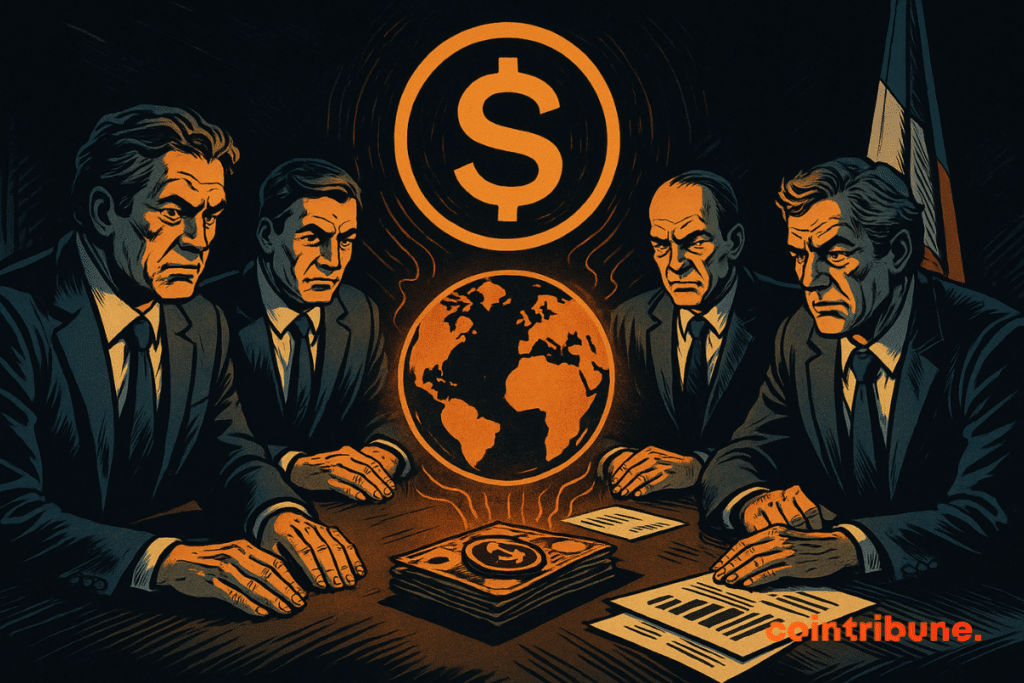Stablecoins: After The BIS, It Is Now The Banque De France's Turn To Sound The Alarm
The United States is accelerating. France, on the other hand, is slowing down. While Washington is fine-tuning favorable federal regulation for stablecoins, the Bank of France is sending multiple red signals. Two visions clash. Is it a divergence of doctrine or a desire to stem American monetary influence on European soil? One thing is certain: distrust is settling in on the French side. And the alert is not new.

In Brief
- Stablecoins are considered risky: liquidity, cybersecurity, manipulation, and fraud are major concerns.
- The dollar dominates these crypto-assets, increasing fears of loss of European monetary sovereignty.
- The Bank of France promotes the idea of a digital euro to counter the hegemony of American stablecoins.
- The stablecoin market weighs more than 250 billion dollars, dominated by USDT and USDC.
A Soft War: When Stablecoins Become a Sovereign Risk
Stablecoins, a danger for global finance? While the Bank for International Settlements judges them ineffective and dangerous for the global economy, the Bank of France is no exception. “There are all kinds of risks around these stablecoins“, declared Agnès Bénassy-Quéré, Deputy Governor of the Bank of France, last June.
She mentioned: liquidity risk, cyber risk, manipulation risk, and fraud risk. This is not insignificant. Behind this controlled language, it is a matter of monetary sovereignty that is at stake.
The Bank of France no longer minces its words. According to it, stablecoins could one day “replace traditional currencies“. The specter of complete disintermediation emerges. And the shadow of the United States looms. Because the US Senate has just adopted a structuring bill for these assets. USDT and USDC together reach 215 billion dollars. An enhanced hegemony.
In May 2022, the violent collapse of TerraUSD remains in memory. A single wave of withdrawals was enough to make the price plummet. Result? Billions evaporated, and a concrete illustration of the chaos these crypto-assets can generate.
François Villeroy de Galhau, Governor of the Bank of France, goes further. He speaks of a “risk of de-Europeanization” through the invasion of dollar-backed stablecoins. In a conference held in Paris on June 10, 2025, he emphasized:
They pose a serious risk of currency privatization.
Crypto Regulation or Competition? Europe Seeking a Balance
Faced with the rise of stablecoins, Europe is seeking a response. And this has a name: the digital euro. Presented as a credible alternative, this “digital note” aims to guarantee monetary autonomy in a world dominated by crypto platforms.
The Governor affirmed: “Distribution will rely on a public-private partnership with commercial banks“. This project, supported by the ECB, should materialize by the end of 2025. In parallel, discussions about euro-compatible stablecoins are multiplying. Some actors are considering tokenizing bank deposits.
Key numbers to remember:
- 254 billion dollars: total capitalization of stablecoins (source: CoinGecko, June 2025);
- 155 billion for USDT, 60 billion for USDC: two American giants;
- 66% of card payments in the euro area depend on international networks;
- 2022: collapse of TerraUSD, estimated loss of 40 billion dollars;
- 2025: official target for the launch of the digital euro by the ECB.
Stablecoins are no longer just an exotic crypto product. They are becoming a transnational financial tool, used in DeFi, daily payments, and even within Big Tech ecosystems. Uber, Apple, and X are already exploring integrations.
European voices call for strict regulation. But pressure is mounting. On one side, American dynamism; on the other, European caution. And in the middle? Markets demanding clarity, speed, and stability.
The stablecoin battle is therefore on. And the issue is no longer purely financial: it is strategic.
The Bank for International Settlements (BIS) likely shares the concerns of the Bank of France. But it does not ignore the revolution underway. Asset tokenization, already initiated by Blackrock, is now capitalized by Real, an actor transforming this disruption into a viable model. And this shift has only just begun.
Maximize your Cointribune experience with our "Read to Earn" program! For every article you read, earn points and access exclusive rewards. Sign up now and start earning benefits.
La révolution blockchain et crypto est en marche ! Et le jour où les impacts se feront ressentir sur l’économie la plus vulnérable de ce Monde, contre toute espérance, je dirai que j’y étais pour quelque chose
The views, thoughts, and opinions expressed in this article belong solely to the author, and should not be taken as investment advice. Do your own research before taking any investment decisions.